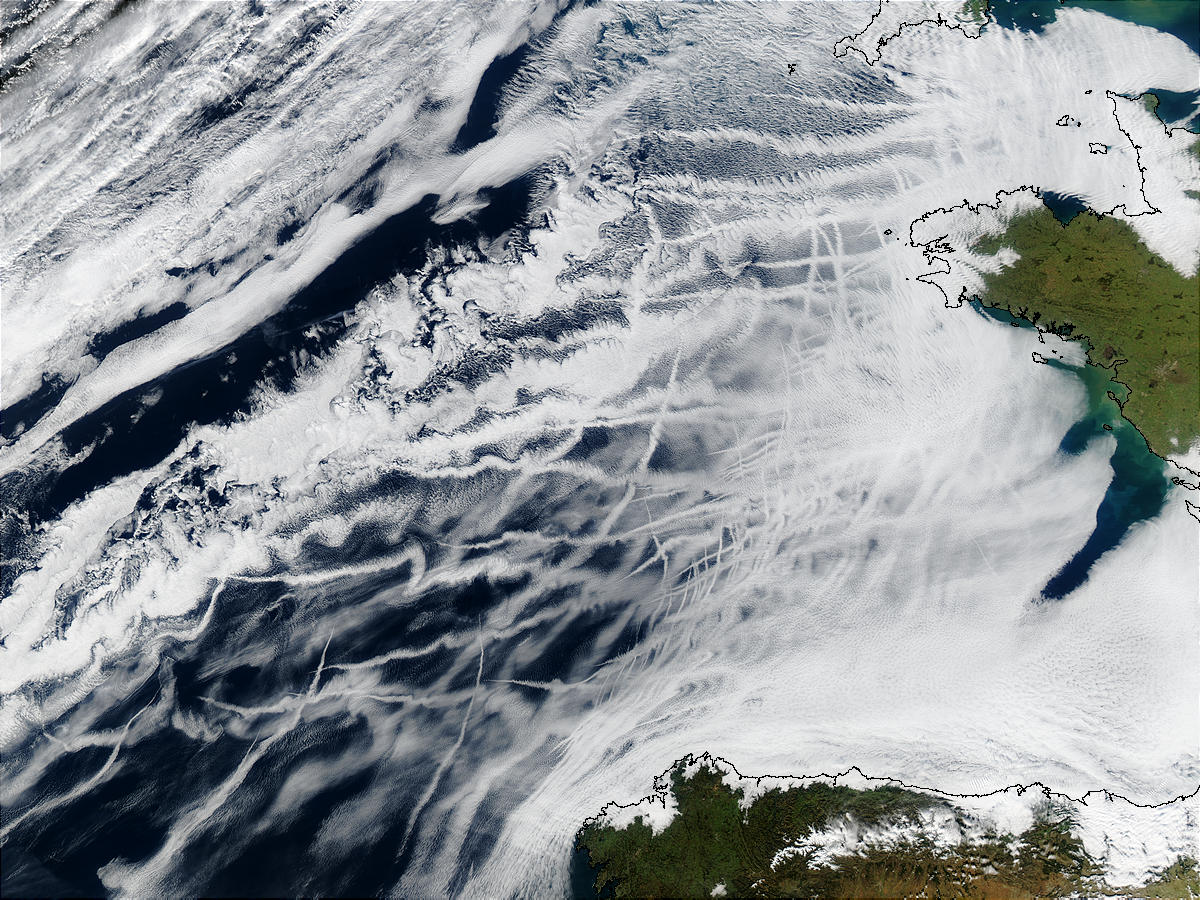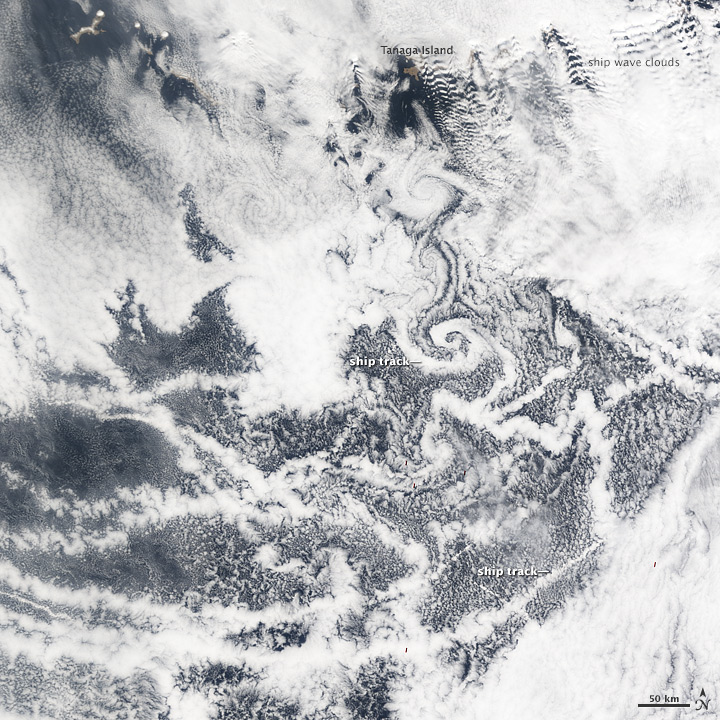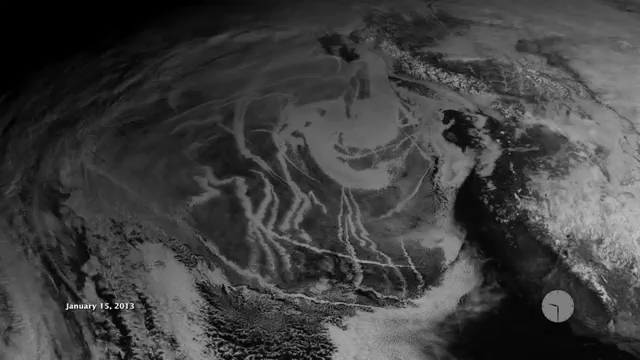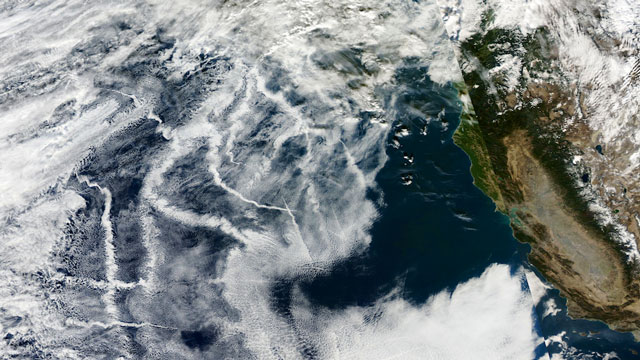Today’s as good a day as any to ponder how massive amounts of stuff gets moved around the world. iPhones from China, sweaters from Bangladesh, chocolates from Switzerland — they all make the transcontinental journey in containers stacked like Legos on cargo ships. And these ships can seed their own clouds, tracing out their paths across the sea.
NASA, which has captured many of these ship paths via satellite, explains how these ship tracks form and why they’re actually brighter than natural clouds. As pretty and delicate as they might look, these ship tracks are actually a record of pollution:

Cloud droplets form as tiny spheres of water around airborne particles, or aerosols. The particles may be natural — such as desert dust or sea salt — or artificial — such as the particles from ship exhaust. Compared to natural aerosols, ship exhaust particles are smaller and more concentrated within a given area, seeding smaller, more numerous cloud droplets. The spheres of water in clouds all reflect sunlight, but some reflect light better than others. Compared to a big sphere, a small sphere has a greater surface-to-volume ratio, and the greater surface area makes for a better reflector. So water droplets in ship-track clouds reflect more light than cloud droplets seeded by natural particles.
Shipping tracks off France and Spain. Image: NASA.
The ship tracks only form when cloud conditions are perfectly humid and non-windy. When conditions change, the existing ship tracks turn swirled and serpentine, bending to the will of invisible winds.

Ship tracks in the Northern Pacific. Image: NASA.

Ship tracks in Northern America. Image: NASA Earth Observatory.
These ship tracks are visible evidence of an industry that touches nearly everything we eat, drink, or use, yet remains unseen to most of us. Rose George, in her recent book 90 Per cent of Everything, chronicles the remarkable scale of the shipping industry. “Shipping is so cheap that it makes more financial sense for Scottish cod to be sent 10,000 miles to China to be filleted, then sent back to Scottish shops and restaurants, than to pay Scottish filleters,” she writes.
What makes financial sense may not make ultimate sense. As these exhaust-formed tracks might suggest, shipping is not without its environment ills. In 2009, the world’s largest 15 ships emitted as much pollution as 760 million cars put together. Imagine all of that clouding up our skies. [Discover]
Top photo by NASA via Discover
